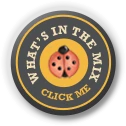Clinging to Fruit 101
- By Chris Mittelstaedt
- Reading Time: 2 mins.
If Cling and Freestone sounds like a 1970s folk group gone electric, you’re not quite wrong. Stone fruit season has begun and it makes me want to do a head-banging pan flute solo. It’s never too late to learn the pan flute or about fruit. So here we go.
Peaches & Nectarines: Cling fruit is fruit in which the flesh is woven into the pit. Freestone fruits are those where the flesh is separated from the pit. Most of the early summer varieties of peaches and nectarines are cling fruits. Cling and freestone applies to both yellow and white-fleshed varieties, as well as donut or saturn varieties.
And now for something completely different….
Here’s a riddle: What non-human life form looks like a tree, is a gigantic herb, and produces a single flower from which 20 hands grow???
If you’re thinking of “Tree-Zilla,” that terrifying jungle creature adapted perfectly to give a group of 20 unsuspecting passing hikers relaxing backrubs, then you’ve qualified for the FruitGuys B-movie character development contest, but sadly have not answered the riddle. I’m, of course, referring to the Banana plant.
Banana “trees” grow from rhizomes into a “trunk” of loosely clustered leaves. From this trunk grows a flower structure from which emerges between one to twenty “hands” (banana bunches). It may sound a bit “bananas” (hey, please tip your waitress, I’m here on Thursdays every week…) but these hands grow with the fruit fingertips pointing up, against gravity. Bananas go through a fantastic conversion process to become edible for us. When they are green as a parrot and hard as a hammer, they are mostly starch — a ratio of 25-to-1 starch to sugar. As they ripen, they convert that starch into sugar. By the time they are edible, they will have a starch to sugar ratio of 1-to-0.
Bananas in Summertime: In the summer, the combination of heat and humidity can sometimes negatively affect bananas’ ripening, appearance, and quality. Generally, at this time of year, we start to pack greener bananas in your mixes in anticipation of heat and humidity speeding the ripening process. We still strive to bring you a yellow banana with green tips (called a Stage 5 banana in the 6-step ripening process), but depending on the weather we can be a bit behind or ahead of this. (As those who live in the “micro-climate” world of San Francisco know, we can deliver bananas to Potrero Hill that will ripen faster than those caught in the fog downtown.) That said, in summer we tend to err on the side of caution in our banana buying to ensure that you receive something that will ripen properly rather than spotting and softening too early. Let us know if Mr. Heat Miser of Summertown is throwing wrenches into our banana program and we’ll try to adjust it for you.
Recent Articles
2025 Summer Fruit Guide: What’s In Season Now?
10 Hot Employee Wellbeing Initiatives to Try in 2025
5 Creative Ways to Use Snacks for Corporate Events
Celebrate Summer with a Rustic Stone Fruit Galette
Subscribe to our Newsletter
"*" indicates required fields





